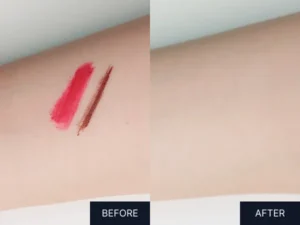Before you proceed: This skin type quiz is just for guidance and not a medical diagnosis. Take 10 simple questions to learn more about your skin. You could discover one or two types that fit you.
Your Result: Oily Skin
Your skin works overtime producing oil, and finding the right balance is all about smart oil control and pore management. Your oil glands are highly active, which means your face tends to get shiny and greasy throughout the day. This excess oil also enlarges your pores and often leads to breakouts like acne and blackheads. The key to managing oily skin is controlling that oil production while keeping your pores healthy and clear.
Key Characteristics:
- Face becomes shiny quickly after cleansing
- Pores appear larger and may get clogged easily
- Prone to blackheads and acne breakouts
- Makeup tends to slide off or fade faster
- Skin texture may feel thick or rough
Essential Care Tips:
- Use gentle, oil-controlling cleansers with salicylic acid or tea tree oil
- Apply lightweight gel-type moisturizers that provide hydration without adding oiliness
- Use oil-control toners to minimize pores and regulate skin oil levels
- Incorporate clay masks 1-2 times weekly to absorb excess sebum
- Choose sebum-controlling makeup products and use blotting papers throughout the day when needed
Your Result: Combination Skin
Your skin shows different characteristics depending on the area, which makes it a mix of multiple skin types. The T-zone, including the forehead, nose, and chin, tends to be oily and more prone to shine or clogged pores, while the cheeks and outer areas may feel normal, dry, or even sensitive. Because of these contrasting needs, combination skin requires a balanced routine that targets each zone.
Key Characteristics:
- T-zone appears oily with visible pores
- Cheek areas feel normal or slightly dry
- May experience breakouts primarily in T-zone
- Different areas react differently to products
- Seasonal changes may affect skin balance
Essential Care Tips:
- Use gentle cleanser suitable for all areas
- Apply oil-control products on T-zone and hydrating products on dry areas
- Consider multi-masking: clay masks on oily, hydrating masks on dry zones
- Choose products labeled for combination skin or separate targeted treatments
Your Result: Dry Skin
Your skin produces less oil and also struggles to retain water, which means it shows signs of both dryness and dehydration. This can make it feel tight, rough, or flaky, while pores lose elasticity and appear coarse, leaving your complexion dull and uneven. To stay comfortable and healthy, dry skin needs consistent hydration and barrier support from both oil-based and water-based moisturizers.
Key Characteristics:
- Feels tight, especially after cleansing
- May appear rough or flaky
- Fine lines may be more visible
- Makeup may appear patchy or cakey
- Sensitive to weather changes
Essential Care Tips:
- Use cream-based cleansers that do not strip natural oils
- Apply rich moisturizers with ceramides or hyaluronic acid while skin is still damp
- Use a humidifier in dry environments
- Avoid hot water and limit exfoliation to once weekly
- Layer hydrating products from thinnest to thickest consistency
Your Result: Normal Skin
Your skin maintains a healthy balance of oil and moisture, which keeps it looking smooth, clear, and even. This well-balanced skin type rarely faces major concerns like excessive dryness or persistent oiliness and usually adapts well to new products and changing conditions. While normal skin is generally low-maintenance, it still benefits from a consistent routine with gentle cleansing, daily hydration, and sun protection to preserve its natural balance and keep it healthy over time.
Key Characteristics:
- Feels comfortable throughout the day
- Even texture with minimal visible pores
- Rarely breaks out or reacts to products
- Makeup applies smoothly and lasts well
- Adapts well to seasonal changes
Essential Care Tips:
- Maintain healthy skin with consistent basic care
- Use gentle cleansers and moisturizers appropriate for your skin
- Apply sunscreen daily
- Experiment with products as tolerated
- Focus on prevention and maintenance
Your Result: Sensitive Skin
Your skin reacts more easily than others to products, environmental changes, or physical irritation, which can lead to redness, stinging, or discomfort. Sensitive skin often overlaps with other skin types, so you may notice dryness, oiliness, or dehydration along with reactivity. Because it’s more delicate, this skin type requires extra care with gentle, fragrance-free formulas and mindful ingredient choices to avoid flare-ups while keeping the skin calm and protected.
Key Characteristics:
- Reacts with redness, burning, or stinging
- May develop rashes or inflammation easily
- Feels uncomfortable with many products
- Changes with weather or stress levels
- May have underlying conditions like rosacea or eczema
Essential Care Tips:
- Choose fragrance-free, hypoallergenic products with minimal ingredients
- Patch test new products before full application
- Use lukewarm water and gentle patting motions
- Avoid physical exfoliants; use mild chemical exfoliants if needed
- Protect skin with broad-spectrum sunscreen and avoid triggers




